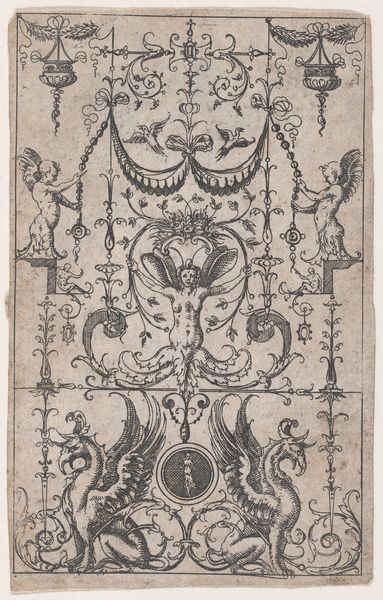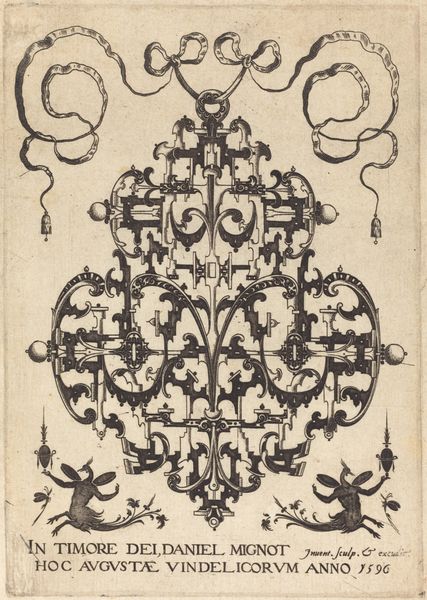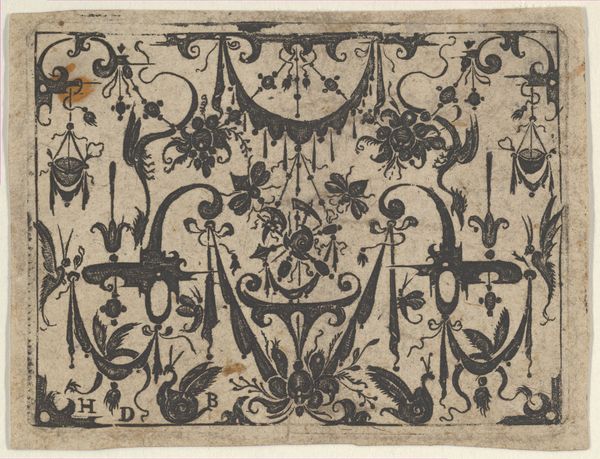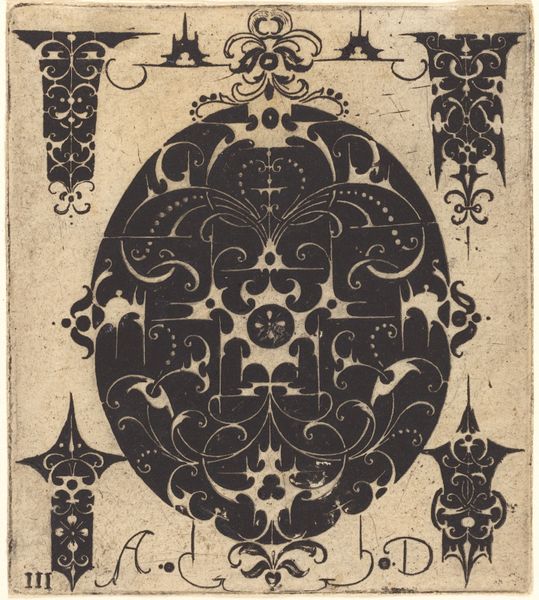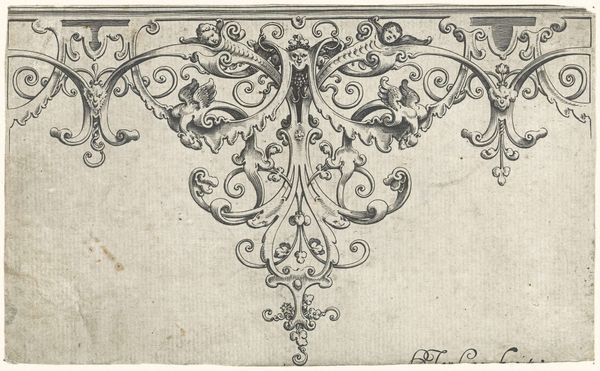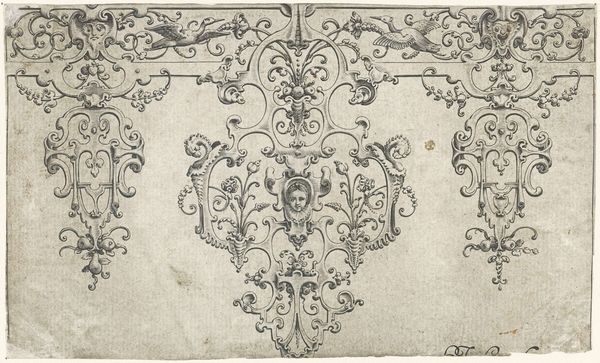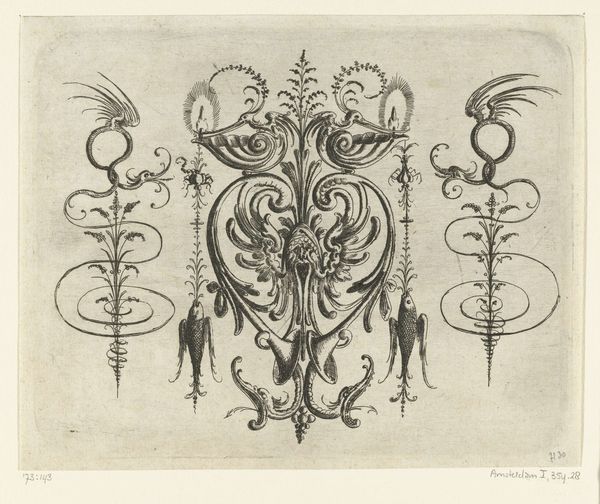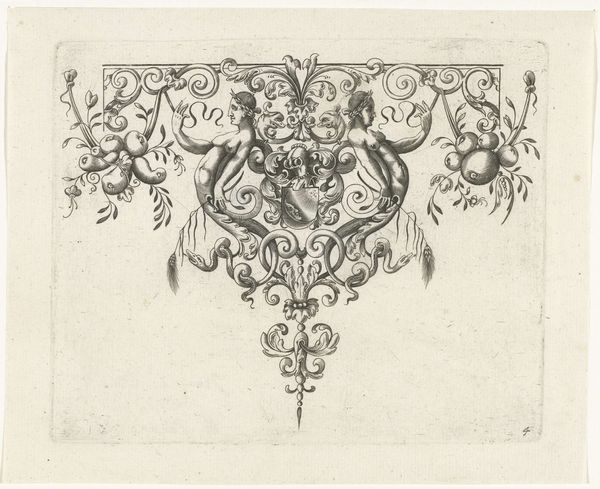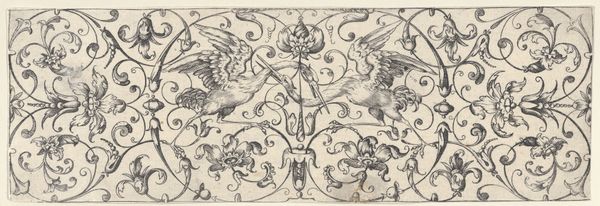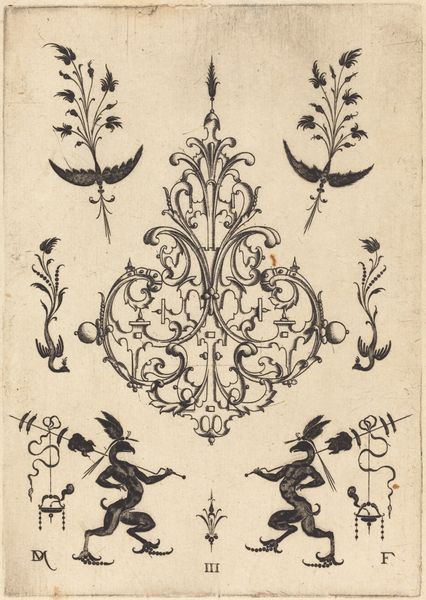
Blackwork Design for Goldsmithwork with Grotesques, Garlands, and Birds 1582 - 1616
0:00
0:00
drawing, ornament, print, etching, ink, pen, engraving
#
drawing
#
ornament
#
toned paper
#
pen drawing
# print
#
pen sketch
#
etching
#
bird
#
11_renaissance
#
personal sketchbook
#
ink
#
ink drawing experimentation
#
pen-ink sketch
#
men
#
pen work
#
sketchbook drawing
#
pen
#
sketchbook art
#
engraving
#
doodle art
Dimensions: Sheet: 1 1/16 × 1 9/16 in. (2.7 × 3.9 cm)
Copyright: Public Domain
Curator: Immediately striking! This piece has such a whimsical, almost surreal quality. Is that intentional, do you think? Editor: Let’s delve into that. What you’re seeing is titled "Blackwork Design for Goldsmithwork with Grotesques, Garlands, and Birds", an etching attributed to Mathias Beitler and believed to have been created sometime between 1582 and 1616. It currently resides at the Metropolitan Museum of Art. And as you can see it showcases fine pen work, combining floral motifs with fantastic creatures. Curator: Right. There's definitely something subversive about it. I see a Renaissance design aesthetic turned…darker? What do you think goldsmiths might have actually made from these kinds of designs? Or who they thought this was *for*? Editor: These “pattern prints” provided accessible visual sources that disseminated new styles across Europe, but were sometimes controversial due to their departures from traditional designs. Artisans adopted or altered those elements, impacting workshops, marketplaces, and consumer taste for luxury goods. They made design "ideas" broadly available at modest prices. Curator: It really challenges conventional notions of beauty and order. Notice how the seemingly delicate birds are juxtaposed with these grotesque masks—the ones sort of suspended within the circular ornaments. What were these artists signaling about societal beauty standards at that time, if anything? Were they subtly mocking established conventions? Editor: Well, grotesque elements allowed designers and goldsmiths to challenge established conventions while expressing creativity and refinement within established societal boundaries. So in the marketplace context, maybe less “subversion” than skillful engagement. What looks shocking to our eyes, might simply have pushed boundaries on a spectrum for elite tastes of the period. The market played a decisive role. Curator: Hmm, a tightrope walk of provocation within patronage parameters, that's insightful. Now I'm wondering how much these pattern books circulated beyond elite artisans. Were there accessible imitations and versions catering to other strata of society and how did social class dictate who even got to imagine, interpret and reinvent themselves aesthetically. Editor: Those are interesting questions regarding circulation that suggest avenues for further research! For now, hopefully we've demonstrated how these images played a vital public role. Curator: I think we've given our listeners plenty to ponder regarding class, imagery, and visual politics in the Renaissance, and of course, encouraged critical viewing habits along the way!
Comments
No comments
Be the first to comment and join the conversation on the ultimate creative platform.



